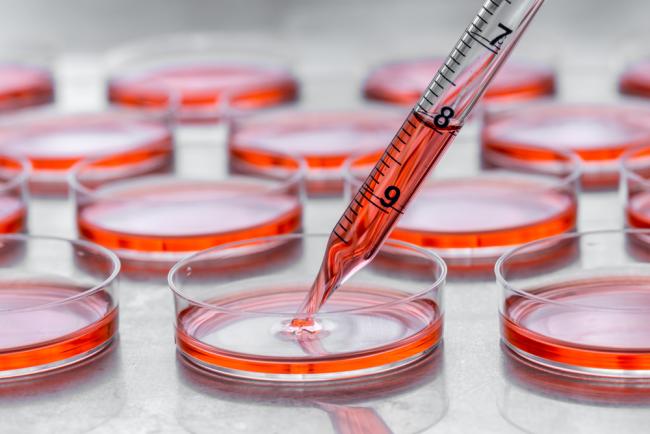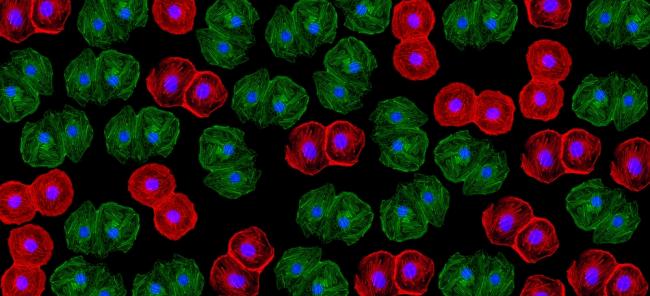Aflatoxins are naturally occurring secondary metabolite poisonous toxins produced by certain molds, particularly Aspergillus flavus and Aspergillus parasiticus. Aflatoxin was discovered in England during the early 1960s when a poisonous outbreak led to the death of more than 100,000 Turkeys 1. The word “Aflatoxin” originated from the name of one of the fungi producing it, Aspergillus flavus. Aflatoxins contaminate 25 percent of food crops worldwide and therefore pose a serious health risk – mainly as known carcinogens – to both humans and animals. The molds producing the Aflatoxins are found on agricultural crops such as maize (corn), peanuts, cottonseed, and tree nuts1,2. The main aflatoxigenic fungi are Aspergillus flavus, Aspergillus parasiticus, and Aspergillus nomius. They occur in warmer parts of the world such as the tropical regions, where temperature and moisture are high: these fungi survive temperature ranges from 12 – 48 ᵒC at a humidity range of 0.83 – 0.97.
Aflatoxins are chemically stable molecules, and they do not undergo degradation under normal cooking temperature which makes them difficult to eliminate in food. They are colorless, odorless and tasteless. They are slightly soluble in water, insoluble in non-polar solvents but soluble in polar organic solvents.
More than 20 isomers of Aflatoxins have been discovered, but four of them – Aflatoxins B1, B2, G1, and G2 pose several severe health risks to humans and animals. These four isomers are found mostly in nuts, grains, and their by-products. Also, the hydroxylated metabolite of Aflatoxin B1 known as Aflatoxin M1, is found in milk and milk products3.
To summarize, there are several types of Aflatoxins, the most common being:
Aflatoxin B1 (AFB1): The most potent carcinogen among aflatoxins.
Aflatoxin B2 (AFB2): Less potent but still carcinogenic.
Aflatoxin G1 (AFG1) and G2 (AFG2): Found in grains and nuts, similar in structure to B1 and B2 but less toxic.
Aflatoxin M1 (AFM1) and M2 (AFM2): Metabolites of Aflatoxins B1 and B2 found in milk and dairy products.
People can be exposed to Aflatoxins by eating contaminated plant products (such as peanuts) or by consuming meat or dairy products from animals that had eaten contaminated feed. Farmers and agricultural workers may be exposed by inhaling dust generated during the handling and processing of contaminated crops and feeds.
Aflatoxins pose acutely toxic, teratogenic, immunosuppressive, and carcinogenic effects2. Acute toxicity of these toxins in humans can result in vomiting, jaundice, and fever while the chronic toxicity can cause liver carcinogenic, mutagenic and genotoxic. In animals, they cause liver and kidney damage, impaired productivity, stunted growth and in the case of chickens, there is a decrease in egg production. To prevent the toxic effects of Aflatoxins and reduce contamination, a comprehensive control must obtain. This includes proper agricultural practices, such as crop rotation and drying of crops to prevent mold growth3. Post-harvest techniques like proper storage and regular monitoring are also crucial. In addition, novel aflatoxin degradation strategies emerge, including irradiation, cold plasma, ozone, electrolyzed oxidizing water, organic acids, natural plant extracts, microorganisms and enzymes2.
Since there is a high potential of contamination and toxicity from foods regarding Aflatoxins, there are some regulatory aspects to marketing those toxins. By assessing the maximal levels of Aflatoxins in food products which are a potential risk to human health, it's possible to establish appropriate risk management strategies. The U.S. Food and Drug Administration (FDA) tests foods that may contain Aflatoxins, such as peanuts and peanut butter, for instance. Many countries have established maximum allowable levels of Aflatoxins in food and feed to minimize health risks. For example: in the United States, the FDA sets the action level for Aflatoxin in human food at 20 parts per billion (ppb). In the European Union - the maximum level for Aflatoxin B1 in peanuts and other nuts is 2 μg/kg.
To date, no outbreak of human illness caused by Aflatoxins has been reported in the United States, but such outbreaks have occurred in some developing countries, since contamination by Aflatoxins is a global health problem3.
The carcinogenic potential of those toxins, make them an interesting target for research4. Aflatoxin B1 and M1 are known to form Aflatoxin-DNA adducts as a critical step in hepatocarcinogenesis5.
Fermentek offers the following high purity Aflatoxins in various sizes for research and analysis purposes: Aflatoxin B1, Aflatoxin B2, Aflatoxin G1, Aflatoxin G2, Aflatoxin M1, Aflatoxin M2, Aflatoxin Q1, Sterigmatocystin and Aflatoxicol, as well as the standard solution of specific Aflatoxins and Aflatoxin mixture, ready for immediate shipment. Most of these products need an license to export them from Israel. To obtain an export license Fermentek has to submit a request to the Israeli authorities, with an attached customer declaration on the intended usage of the materials (there are two available declaration forms: an "End-user Declaration" and a "Distributor Declaration").
Pickova D, Ostry V, Toman J, Malir F. Aflatoxins: History, Significant Milestones, Recent Data on Their Toxicity and Ways to Mitigation. Toxins (Basel). 2021 Jun 3;13(6):399. doi: 10.3390/toxins13060399. PMID: 34205163; PMCID: PMC8227755.
Shabeer S, Asad S, Jamal A, Ali A. Aflatoxin Contamination, Its Impact and Management Strategies: An Updated Review. Toxins (Basel). 2022 Apr 27;14(5):307. doi: 10.3390/toxins14050307. PMID: 35622554; PMCID: PMC9147583.
Guo Y, Zhao L, Ma Q, Ji C. Novel strategies for degradation of aflatoxins in food and feed: A review. Food Res Int. 2021 Feb;140:109878. doi: 10.1016/j.foodres.2020.109878. Epub 2020 Nov 21. PMID: 33648196.
Cao W, Yu P, Yang K, Cao D. Aflatoxin B1: metabolism, toxicology, and its involvement in oxidative stress and cancer development. Toxicol Mech Methods. 2022 Jul;32(6):395-419. doi: 10.1080/15376516.2021.2021339. Epub 2022 Jan 11. PMID: 34930097.
Yu MW, Lien JP, Liaw YF, Chen CJ. Effects of multiple risk factors for hepatocellular carcinoma on formation of aflatoxin B1-DNA adducts. Cancer Epidemiol Biomarkers Prev. 1996 Aug;5(8):613-9. PMID: 8824363.





